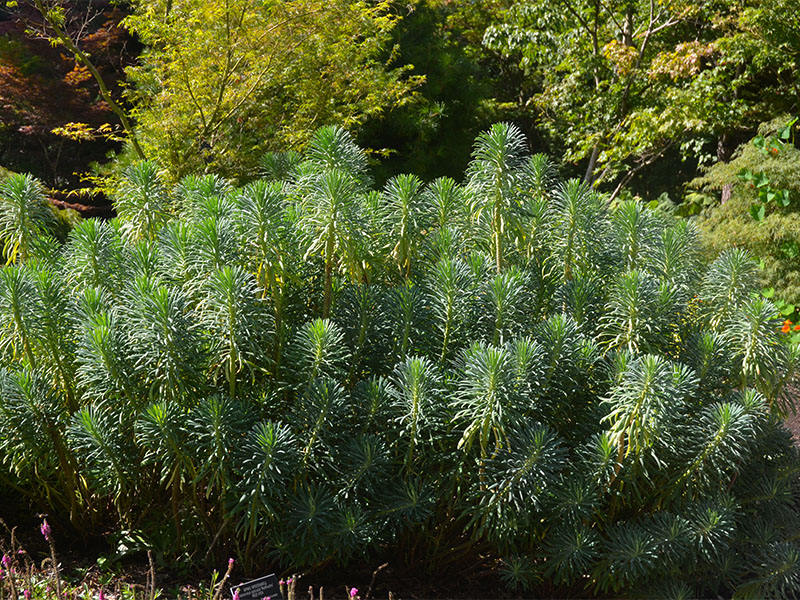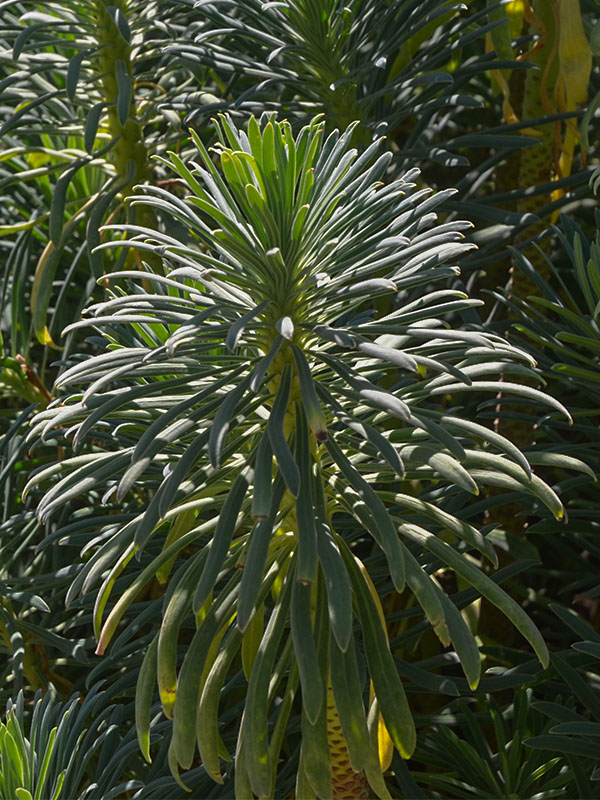
Perennials > Euphorbia > Euphorbia characias > Euphorbia characias subsp. wulfenii
Euphorbia characias
ssp. wulfenii
Mediterranean Spurge
Origin: Native to the Mediterranean (southern Europe, the Balkans and European Turkey). Genus named after Euphorbus, the Greek physician (1st century A.D.).
| Family |
| Euphorbiaceae |
| Genus |
| Euphorbia |
| Species |
| characias |
| Category |
| Perennials |
| Subspecies |
| wulfenii |
| Synonyms |
| Euphorbia wulfenii |
| USDA Hardiness Zone |
| 6 - 8 |
| Canadian Hardiness Zone |
| 5a - 8a |
| RHS Hardiness Zone |
| H4 - H7 |
| Temperature (°C) |
| -23 - (-7) |
| Temperature (°F) |
| -10 - 20 |
| Height |
| 1 - 1.5 m |
| Spread |
| 1 - 1.5 m |
Photographs
Description and Growing Information
Flowering Period
| General Description |
| Euphorbia characias subsp. wulfenii is an upright evergreen sub-shrub with narrow, grey-green leaves and heads of yellow-green flowers. |
| Cultivation |
| Grow in a sheltered location, in full sun to part shade and light, well-drained soil. In late summer or autumn prune flowering shoots to the ground. Gloves should be worn when handling this plant as the sap is toxic. |
| ID Characteristic |
| Sparsely-branched. |
| Pests |
| Susceptible to aphids. No serious diseases of note. |
| Leaf Description |
| Narrow, linear to obovate, up to 13 cm in length, grey-green, arranged spirally along stems. |
| Flower Description |
| No petals, bracts are yellow-green, glands purple, arranged in large, rounded clusters. |
| Notable Specimens |
| RHS Garden Rosemoor, North Devon, England. |
| Propagation |
| Propagate by division in early spring or take basal cuttings in spring or early summer. |
| Ethnobotanical Uses (Disclaimer) |
| The entire plant is highly toxic if ingested. Stems contain a highly poisonous, milky white sap that will irritate the skin. |

